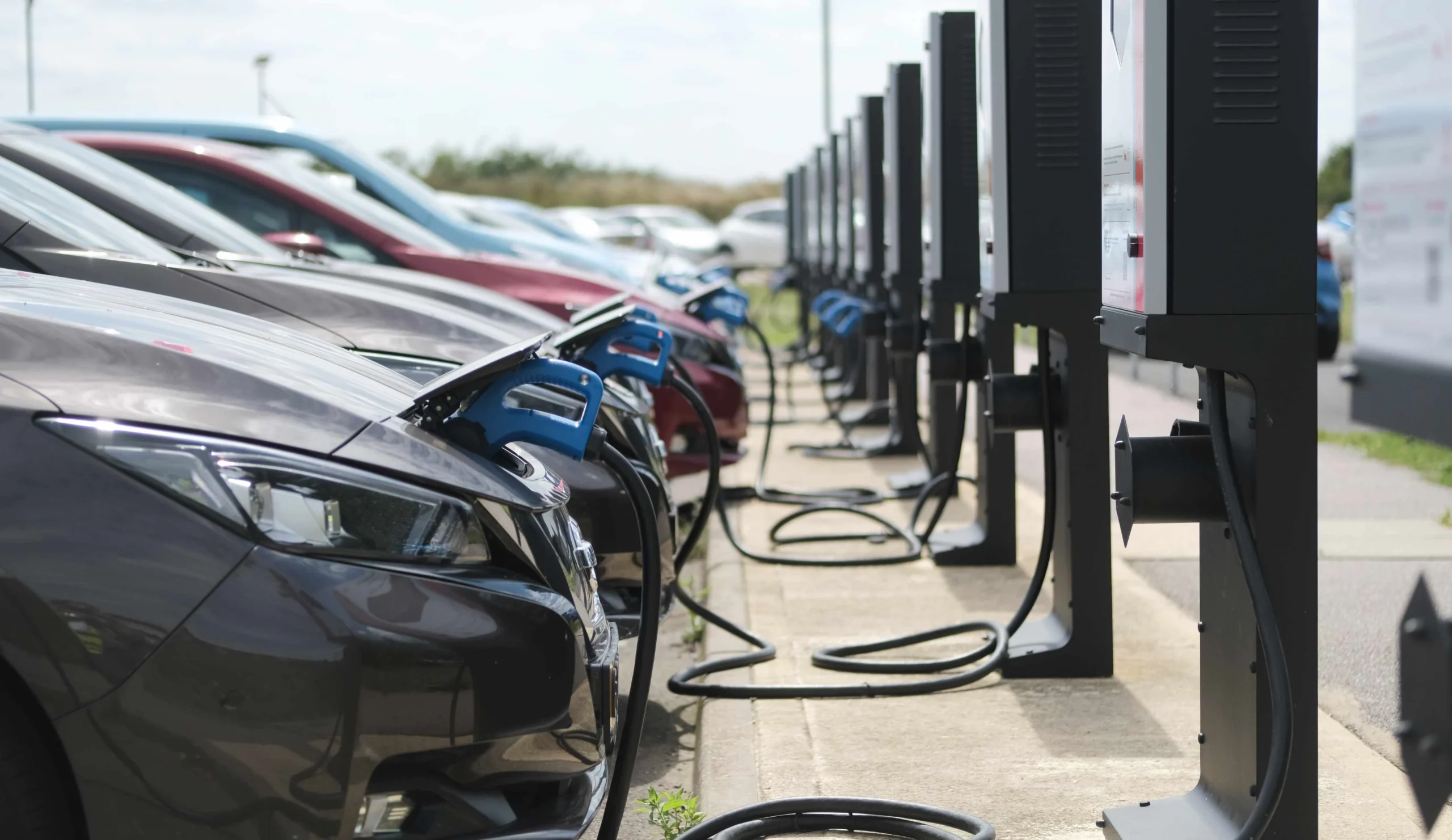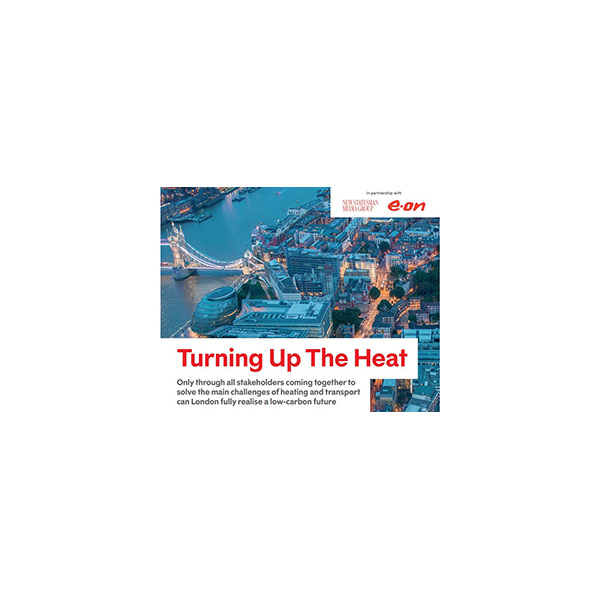
At the beginning of 2023, London received the undesirable honour of being named the world’s most congested city. It was the second successive year the UK capital had finished atop INRIX’s global congestion ranking, a study that assesses over 1,000 cities across 50 nations. Time lost to traffic, it found, was now 5% higher than pre-pandemic levels, with drivers spending an average of 156 hours in gridlock.

Time is not the only price Londoners are paying in efforts to navigate the city’s congested streets. According to figures from the Greater London Authority, 25% of London’s carbon emissions are generated by the transport of people and goods, three-quarters of which come from road transport. The decarbonisation of its roadways will play a critical role in deciding whether London and its various boroughs hit their ambitious net-zero targets.
The good news is that those driving progress have not been sitting idle. According to figures from Transport for London (TfL), the number of public charging points in the capital rose by 85% between 2019 and December 2021. That put the figure at over 8,600, a third of the UK total. However, the pace still needs to pick up considerably. With the UK-wide ban on the sale of new petrol and diesel cars coming into effect at the end of the decade, modelling suggests London will need around 40,000 to 60,000 electric vehicle (EV) charge points by 2030.
For David Butters, general manager at E.ON Drive, success will depend in large part upon various stakeholders from across the public and private sectors coming together and identifying common challenges and shared opportunities.
“It has become increasingly clear to all parties just how significant a role the EV space must play in driving net zero,” Butters explains. “To take a step back, it’s about defining what your overall electrification strategy is. Accommodating that shift requires considerable changes to behaviour, investment and the ways in which we think about and discuss energy systems and supply.
“How do you move away from where you currently are at speed? How do you incentivise different modes of transport? How will that impact where and when people travel? You have all these factors dictating a city’s infrastructure needs.”
E.ON has two EV divisions: one manufacturing, selling and operating EV charging points; the other building, owning and operating the infrastructure. Butters sits across both units, meaning he works in close collaboration with both private clients and public bodies, identifying the scope for EV installation and delivering infrastructure.
TfL forecasts that “most of London’s charge points by 2030 will be delivered by the private sector”, but that public sector land could accommodate a quarter of the 4,000 rapid charge points London may need by 2030. Recent examples of the public sector supporting such developments is the opening of two flagship rapid charging hubs in Stratford and Woolwich, and a taxi-only dedicated rapid charging station at Baynard House in the City of London, but growing private sector installations in locations such as supermarkets, workplaces and petrol stations will still be essential.
Striking a public-private balance in London
In truth, London – and the country as a whole – will only hit its targets if both private and public sectors play a significant role. The number of parties required to stitch these rather fragmented efforts together is a significant challenge, and will only grow as requirements for new infrastructure gather speed.
“With so many parties involved, it can become difficult to see the wood for the trees,” Butters acknowledges. “But everybody has a role to play in defining and setting strategies and actions that are relevant to them.
“In the case of a vast city like London, different areas and groups will have different requirements and priorities. There is a great contrast between the needs of Zone 1 compared with those of the suburbs, but it is important to understand where the common challenges exist. Energy supply is one such shared challenge. How will we manage capacity constraints as we move away from big, bulky centralised energy systems into a more decentralised, flexible energy world having to cope with significantly more demand? That is where real leadership is required, joining these bodies together to identify common causes.”

Indeed, a shift to EVs in London requires more than just a focus on charging infrastructure and incentivising adoption; it is critical in defining the broader electrification strategy an energy transition requires, a mission that demands a significant infrastructural and behavioural change in an ever-shortening time frame.
For this reason, Butters believes that E.ON can be one of those required leaders, helping to bring parties and efforts together on this path to net zero, engaging the delivery of responses that have local relevance, but also plugging into a wider effort. The good news, he says, is that EV adoption in London and beyond can be a significant driver of broader change.
“For companies and individuals, it is a great place to start,” Butters says of electric transport’s role in the net-zero journey. “It serves as a perfect introduction to a wider suite of technologies and possibilities.
“It will add cost to your electricity bill – users quickly forget about the money they were spending on petrol each week, prompting them to investigate options such as smart and time-of-use tariffs, and from there even look into options such as solar generation in order to lower or remove cost.
“Whether you’re a home, business, council or city, it’s important to start now. Once you have a plan for electric vehicles and charging in place, you can soon identify the quick wins.”

EV solutions for all parties
However, the variety of users and requirements in a city of nine million people makes behavioural transformation no easy feat. Butters acknowledges that we are now beyond the early-adoption phase and moving into the “very early stages of mass adoption”, but given the scale of transformation required, efforts remain in their relative infancy. While most challenges are not unique to London – “they’re mainly the same complexities on a larger scale” – it is a city with a far larger proportion of journeys taken by public transport than anywhere else in the UK and fewer individual drivers.
“There’s still significant discussion around what the optimal infrastructure mix looks like in order to give drivers the same freedom they enjoyed in petrol vehicles, while also demanding a real balancing of energy needs,” Butters explains. “For organisations that have committed to electrification, there are some easy things that they can do on their own, but then more challenging aspects where they need to find support or partnerships.”
Butters compares addressing these requirements to building an aircraft while in flight but is enthused by the degree of collaboration he is already seeing in the market. Forums are beginning to emerge where various interest groups are increasingly willing to share experiences and best practices, as well as explore opportunities for co-investment.
“A word I’m hearing a lot is ‘coopetition’,” says Butters. “We’re witnessing really positive conversations between groups like last-mile delivery companies. Building a fleet-charging centre in isolation is extremely expensive and is likely to be left idle much of the time. In order to optimise financial returns and make such a project commercially viable, you need to see companies that might traditionally be seen as competitors putting their heads together.”
Amid all this change, it is important that everybody, from private residents to large corporations, feels engaged on the decarbonisation journey, without being overawed. “Anybody who plugs in an EV is entering an increasingly complex electricity ecosystem, one that is evolving at an incredibly fast rate,” says Butters. “As more vehicles get plugged in, that complexity grows.
“E.ON’s philosophy is to keep things as simple as possible for users. We have knowledge of these energy ecosystems. We don’t expect our customers to have that same understanding; our role is to empower them to participate.”
While not expecting expertise, education is a big part of these efforts. Various incentive schemes have helped drive EV adoption among certain socio-economic groups, but a big part of the challenge remains with how one makes EV access in London and other cities easier and more equitable for those that are less advantaged.
Some 70% of charging is currently conducted at home – often not an option for those living in high-density housing. This balance will have to change as the proportion of EV ownership grows, but that requires far greater access to public or shared charging infrastructure.
“Again, public authorities, private bodies and, ultimately, national government all have a role to play in providing the right education, incentives and access,” Butters believes. “We’ve made a good start, but there’s an awfully long way left to travel and the journey will not be a steady straight line. It needs to accelerate rapidly. Only through coming together and providing that joined-up thinking can we make it a reality.”
For details on decarbonising your organisation, go to eonenergy.com/decarbonising-london







